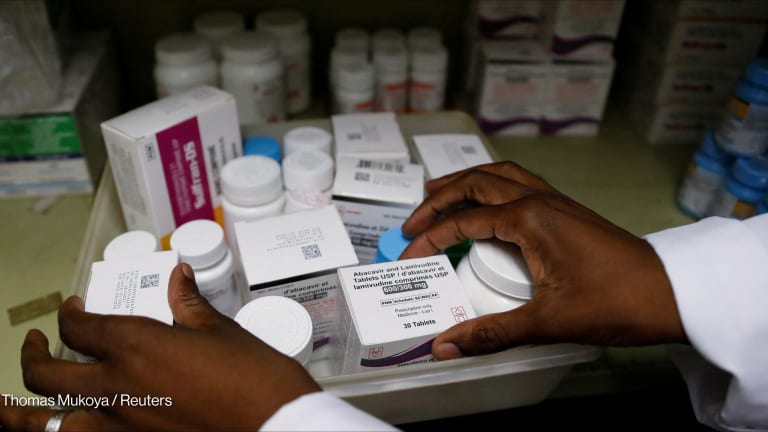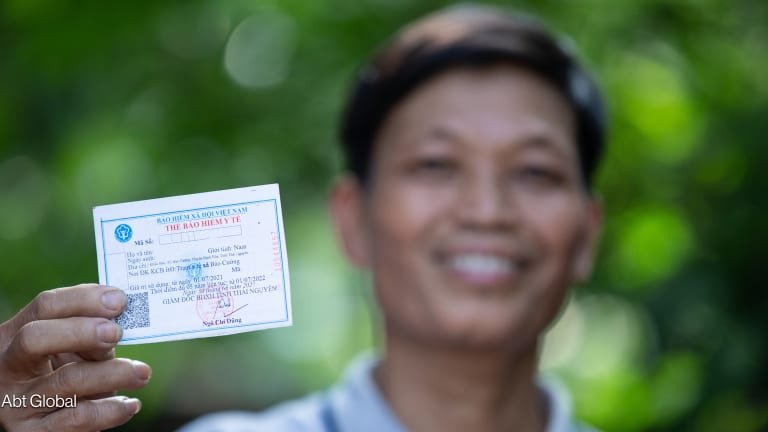
As the pandemic spread across the globe, lockdowns and other restrictions designed to curb COVID-19 raised other health risks, particularly in people living with HIV, who feared their access to lifesaving services might be interrupted. Instead, new methods — often designed by patients — of meeting their needs, began cropping up in communities of people living with HIV around the world.
The emergence of these models of differentiated service delivery during the pandemic — including across the global south — is one of the central themes of the International AIDS Society Conference on HIV Science that began Sunday. Government officials and civil society organizations have detailed the client-centered approaches they have introduced to better serve people living with HIV or to prevent people from acquiring the virus while reducing the burden on national health systems at a moment when they are particularly fragile.
Now those officials and organizations are working to ensure that the new models of DSDs outlast the pandemic.
“COVID has really shown us that we can be extremely flexible and we can adapt our services to what people need,” said Dr. Reshmie Ramautarsing, program and technical director at the Institute of HIV Research and Innovation, or IHRI, in Thailand. “What we have to continue beyond COVID is just providing choices to meet people’s lifestyles. Continue with recognizing that one size does not fit all.”
“We need to really build on that [community monitoring] to create services and systems that allow for patients and recipients of care to be at the center of service delivery.”
— Wame Jallow, director of global programs and advocacy, International Treatment Preparedness CoalitionThe World Health Organization has actually centralized differentiated service delivery in the bid to meet the global targets set by UNAIDS to end the AIDS epidemic by 2030: 95% of all people living with HIV diagnosed, 95% of those patients on treatment, and 95% of those patients virally suppressed.
What DSD actually looks like depends on the context — and needs to be initiated by or be responsive to the specific needs of communities, said Wame Jallow, the director of global programs and advocacy at the International Treatment Preparedness Coalition, during a conference panel Monday.
“In the COVID context, we have seen lockdowns, changes of policies, real gaps in terms of people’s access to services,” she said. “What that called for is a real push for how we can look at differentiated service delivery and concrete ways in which people are able to access services.” And not just access to treatment or prevention, but also other components that affect people’s ability to take advantage of those efforts, including mental health and improved nutrition services.
Sign up for Devex CheckUp
The must-read weekly newsletter for exclusive global health news and insider insights.
She said that means government officials and civil service organizations continuously engage with the communities and health care providers who are most aware of those challenges and how best to address them.
In Thailand, IHRI introduced a suite of services during the pandemic, many in direct response to community demands. The new models included several that utilized telemedicine to replace in-person visits and streamline access to HIV treatment or prevention.
Patients newly diagnosed with HIV and enrolled on antiretroviral, or ARV, drugs, were allowed to opt for an online follow-up after two weeks, instead of an in-person meeting. Similarly, members of vulnerable populations looking to start pre-exposure prophylaxis, which prevents the acquisition of HIV, were given the option of telehealth follow-ups.
“Most services can easily be adapted for online provision,” Reshmie said, including express services that allow people to digitally fill ARV prescriptions. “Express and online delivery has actually become the new normal and will definitely be continued post-COVID.”
In Ethiopia, the pandemic prompted the government to expand the dispensing of longer doses of ARVs. The country had already successfully scaled up multi-month prescriptions before COVID-19 arrived, but Mirtie Getachew Meselu from Ethiopia’s ministry of health explained that the arrival of the coronavirus prompted the government to expand eligibility.
That allowed an increasing number of patients to pick up six months’ worth of ARVs at a time. People in potentially more complicated situations who require more regular consultations with health workers — including children under 15 and members of key populations, such as sex workers — can access ARVs for three months, instead of one.
The result was a rapid expansion in people taking advantage of the multi-month prescriptions over the course of 2020, Mirtie said, including a jump from 11% of pediatric patients to more than 82%.
Health care workers now “say that they are seeing a decrease in workload and they get time to evaluate unstable clients and also to improve the quality of service,” she said.
Ethiopia was able to pivot to multi-month dispensing, Mirtie said, because the country already had a proven system in place for distributing and delivering ARVs.
“The lesson for other countries is they need a strong supply chain and monitoring and evaluation,” she said.
The introduction of new strategies for delivering HIV services, particularly models that rely on technology, does introduce some access challenges, Jallow said, particularly for the poorest and most vulnerable. She said even with the expansion of differentiated service delivery, it will be important to continue to engage with patients to ensure no one is being left behind.
“What we’re seeing as a result of COVID is more communities monitoring what’s happening, telling us what is happening on the ground,” she said. “We need to really build on that to create services and systems that allow for patients and recipients of care to be at the center of service delivery.”









